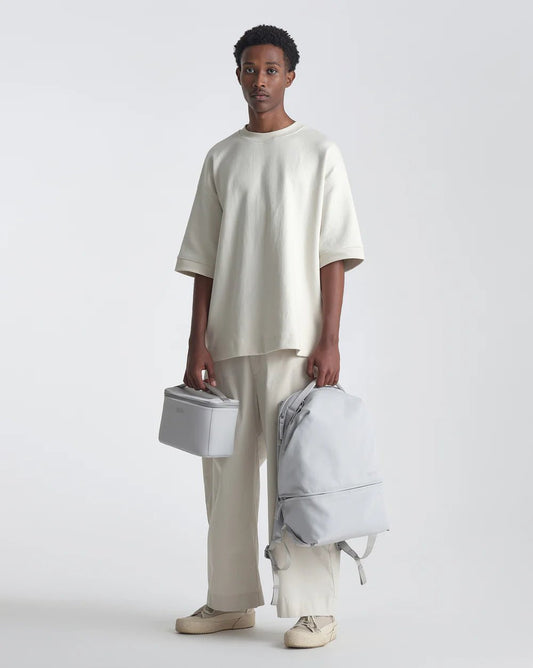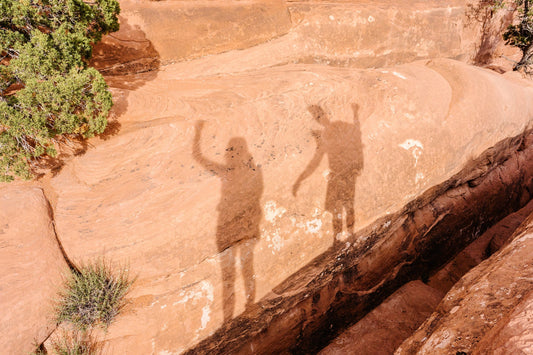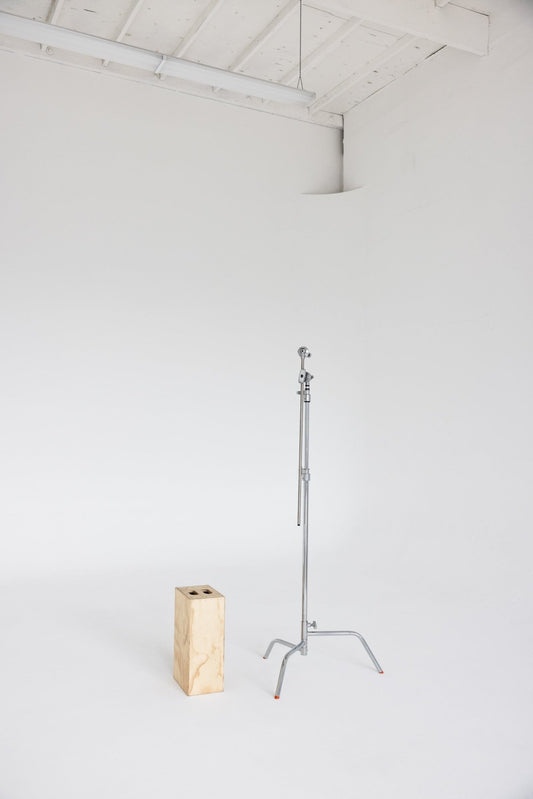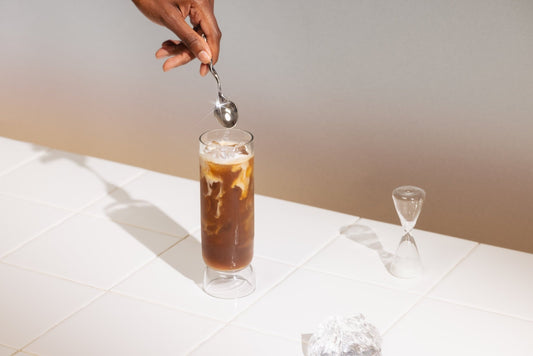Reed Klass (1997, Ohio) is a photographer, journalist, and printmaker based in Ohio, exploring rural America, politics, the land, and the human condition through his work.
We're excited to partner with Reed Prints to bring his quality and personal service to professional photographers. Use code PALETTE15 to receive 15% off your first print order with Reed.
At what age did you first feel creative?
I can’t pinpoint the year specifically, but I remember feeling creative from a really young age. I had this really great childhood where I got to spend time in the woods all the time and build legos and travel a lot, and I vividly remember always being inspired by all of that and making up stories while playing. It was really simple creativity, but those things were definitely early creative expression for me. I remember one of my first big creative projects being this documentary I made about my friend group in high school. It was all about our real lives at the time - I’ve always been inspired by and interested in the things that are naturally around me, and am able to creatively draw from that in one way or another.

Did someone in your life inspire you to be creative?
Without trying to sound pretentious, I think I inspire myself to be creative. I didn’t grow up around a lot of art or creative people, but I’m really self-motivated and somehow I’ve always felt the freedom to do whatever I want to, the hard part is just figuring out how to do those things logistically and financially. My family definitely set me up for success in always supporting the rabbit holes I was interested in pursuing through education and different opportunities. As I’ve gotten older I feel like I now have this constant mental rolodex of artists that I’m aspiring to be more like, people I either know about from following them or have met through other relationships I have, and that list is always growing and changing.

How did you start your creative business?
I learned what photojournalism was in high school, and it fascinated me, so I decided to pursue it as a career. I started photographing seriously when I was in college, mostly journalistic assignments and stuff for school. It didn’t take long for me to get curious about all the different directions photography could take me, and I found that printmaking was this really natural extension of photography where I could begin transforming literal things I was documenting and make them more expressive without being bound to the burden of having to tell the truth. Over time, I’ve just pursued both photography and printing hand-in-hand and as I’ve grown as a photographer I’ve also grown as a printmaker, and both of those things have made me grow as an artist. At this point photography and printing are inseparable for me.

Do you feel the environment / geographic location where you live affects you work? If so, how does this influence show up in your work?
The environment I’m in definitely affects my work. I started Reed Prints when I was living in a small apartment in DC, and it wasn’t a city or space I felt free and creative in at all. At the time, I had ideas, but I didn’t really see a way the business could grow because I felt stifled there. I moved home with the intention of growing as an artist and a business owner. Even though you might expect moving to New York or LA to be a more typical decision for a creative, I’ve found being around family and old friends - many of whom were in that first documentary I made - has been a really comforting environment to be in while taking risks professionally, personally, and financially. Eventually I want to move somewhere much more beautiful and exciting than Ohio, and I hope that will inspire me even more, but for now I know I’m in the right place.
My personal photography is entirely influenced by place too. My work is documentary in nature, so I’m just always photographing the things around me, trying to make art from my life as it naturally is.

When I was in DC, I was photographing a lot of political events, because that was the most interesting thing happening to me there, but I didn’t have a connection to the place or the people in a meaningful way. Eventually I knew I needed to leave, because I wasn’t fulfilled feeling like a supporting actor all the time. Now that I’m back home, my personal work is shifting more towards relationships, the land around me, and memories of my boyhood, which I have a much deeper connection to. I feel myself developing a new body of personal work here and it’s exciting.
I’m heavily influenced by photographers who are toeing the line between documentary and abstraction. Martin Bogren, Robert Adams, Mark Cohen, Antoine D’Agata, Jack Davison, Eugenie Shinkle, Steinmetz, Meatyard, Steiglitz. I also get influenced by people I see making interesting, meaningful prints of their work – David Abrahams, Ray Meeks, Jack Whitefield, and Eva Roefs are recent influences as far as printing goes.
I draw inspiration from all over the place. Observing the natural world, really beautiful and peaceful places, my own memories and deep emotional experiences, exciting places I travel to for work or fun. Also people who I admire not just as artists but as actual people – Josef Albers for his regimented and disciplined approach to art making, Sally Mann for her commitment to intertwining her life and art, Steve Jobs for finding a way to make impossible things happen at all costs, Dijon for deep emotional expression and making music that sounds like something tangible I can see and taste.

When / where do you think of your best / favorite ideas?
I usually get good ideas after I’ve consumed something that’s inspiring to me, and I take time to process it. This usually happens on a run or while driving, but I also get inspired when I’m around other creative people who are making things or are ambitious and aren’t afraid to dream. Also when I’m in an altered mindset - after a long run, caffeinated, drinking, high, exhausted or very well rested - that’s when ideas come.

How would you describe your work's palette?
My personal work is mostly black and white, but in a soft way. When it’s color, the colors are muted and neutral. I’m not naturally a loud or high energy person usually, so I feel this is a natural expression of my headspace.

The color palette of Reed Prints is earth tones, warm beige and light brown, colors that naturally exist in the world. Printmaking is fundamentally connected to natural elements - water is used to make ink and develop prints, the plants that paper is made out of grow from the earth, and photography as a whole wouldn’t exist without light - so those natural colors felt fitting when trying to work up an identity for the business.

Do you feel like your ideas are always translated as you planned / expected / imagined?
My ideas are definitely not always translated like I expect or imagine. Photographing for me is this way of responding to the world and trying to make sense of it, so I do very little planning, and the mystery of the pictures not turning out like I thought they would is the best part of photography to me. And printmaking is this arcane process that is much more art than it is science, so it’s hard to plan things out until you’re in the middle of a printing day. Other creative ideas I have just take way longer to eke out of me than I think they will, and they always look different in the long run than I first imagined they would.

Do you have any tools or practices for getting out of a creative "funk"?
I’m honestly not sure I’ve ever successfully gotten out of a creative rut, or actually ever successfully gotten myself into a creative flow for an extended period of time. I’m a strong believer in not waiting for inspiration or the right time to move forward with little glimmers of ideas, but instead making intentional decisions to put yourself in a headspace where you can create consistently. We find a way to eat and sleep every day pretty much regardless of the circumstances we’re in, and I think art making and creative business practice has to be the same way - a discipline born out of an internal, biological necessity. But I will say, I get burnt out on creating less often when I’m taking care of myself physically, mentally, emotionally, and spiritually.

What inspired you to start your own print studio?
I had the idea for Reed Prints a couple of years ago when I started getting more serious about photography as art. I remember looking for places to have great prints made and just being uninspired by the options out there. Every printing option I found seemed offered by people who were too old or not my style, too expensive, or too low quality. The photography world is a really cool, innovative industry that seems to constantly be moving forward, but I noticed printmaking, a really important part of photography, was just this stale corner of the industry without anything exciting going on in it. Since I sort of got obsessed with photographic printmaking in college and built this base level skillset, I just decided to try to create a fun, cool, easy to use print studio that photographers like myself would get excited about working with.
So now Reed Prints exists, and it’s just what it sounds like. I’m Reed, I’m doing all the printing, and I offer photographers a personal, pleasing experience of ordering prints. Right now I offer pigment prints and black and white darkroom prints, and I hope to offer c-type or color darkroom prints in the future. I’m also helping photographers sell and distribute their work through the Reed Prints Marketplace, which is an online gallery where photographers can earn passive income by listing and selling their prints (with frames) to buyers without having to facilitate all the printing and logistics.

Where did you learn the art and technicalities of printing photographs?
I’m constantly learning more about printmaking, but I mostly taught myself my core level of printing knowledge by practicing and reading lots of boring books. Some people who have been really key along the way are Elizabeth Dove, who got me stoked on alternative process printing in college, Sergio Purtell, who has refined my darkroom printing at the Charcoal Book Club Chico Review for the past couple of years, and Tim Richmond, who recently taught me c-type printing. I’m also currently mentoring with and printing for Jesse Lenz, founder of Charcoal Book Club, here in Ohio and he’s helping me get a lot better at darkroom printing while we print his work for a show in Arles, France this summer.

What is your favorite part of the process?
Nailing a print. Sometimes prints just come out of the darkroom or the printer looking perfect, and it’s honestly a rush. It makes you want to show people your work, or if it’s for a client, it gets you really excited to mail them the final prints.

Was there a turning point in your work where you feel you found your way or style?
Does getting banned from my college darkroom because I kept breaking in count? Obviously not an artistic turning point, but it was a moment where I realized I was really interested in something and wanted to keep doing it.

Do you have any steps / tools / methods in your creative process that you’ve developed in your practice that feel unique/special to you?
Offering very personalized service. I haven’t been running Reed Prints that long, but every client I’ve worked with so far has been really excited about the personal, one-on-one aspect of ordering prints. And being relatable. I’m roughly the same age as most people I work with and exist in the same creative/digital ecosystem, so I think photographers understand that I get what they’re looking for.

What is your favorite medium / material / subject to work with?
I’m not sure I have a favorite. Different types of prints and paper serve different work well, so finding the right medium for each client’s work is really rewarding.

How has your work / style changed / evolved since you started?
I think like any skill, I’m just constantly trying to improve technically and artistically. I look back on old prints and wonder how I was okay with them years ago, but I’m sure years from now I’ll be doing the same thing about the prints I’m making now. Learning how to live like a better artist has made me a better printmaker, and becoming a better printmaker has made me a better artist.
We're excited to partner with Reed Prints to bring his quality and personal service to professional photographers. Use code PALETTE15 to receive 15% off your first print order with Reed.




